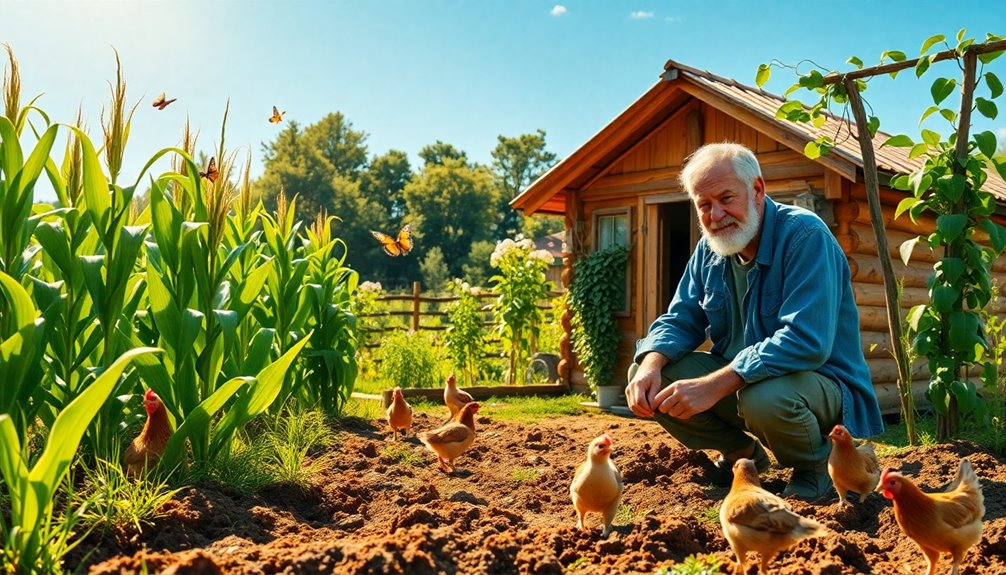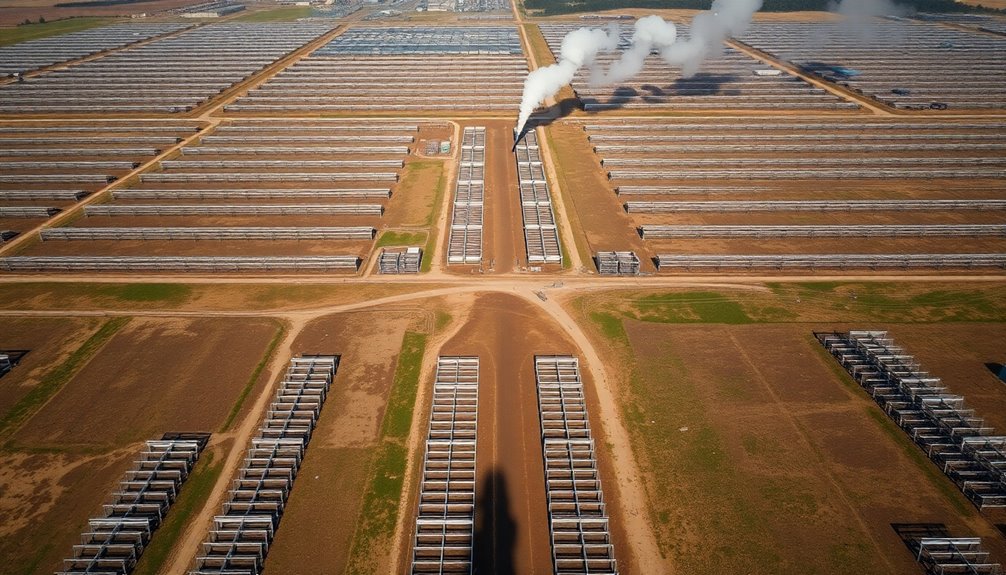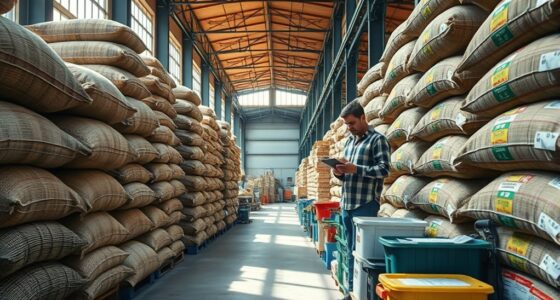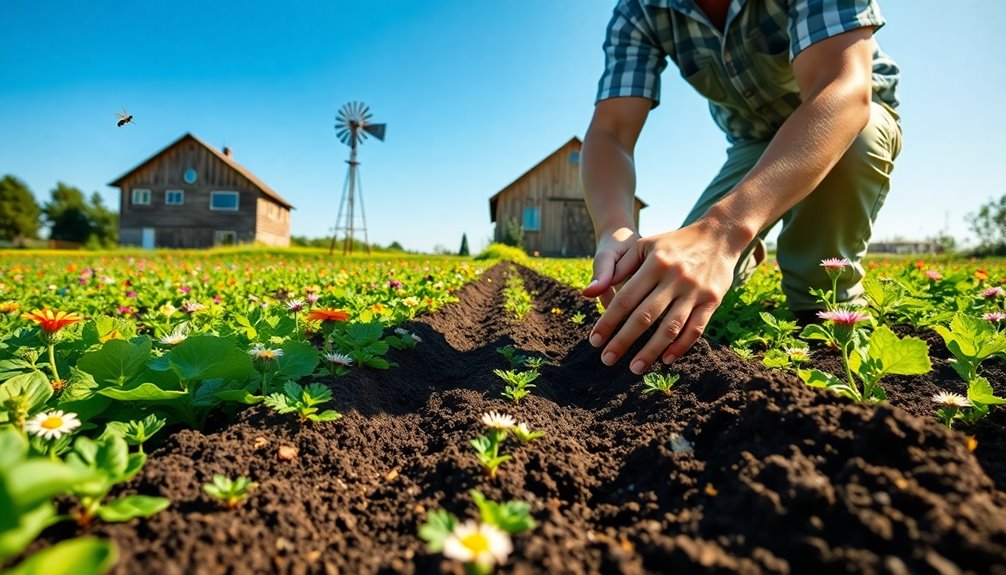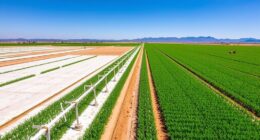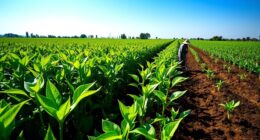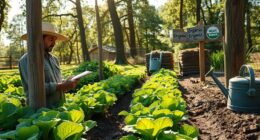Subsistence farming is all about growing just enough food to feed you and your family. You rely on small plots of land and traditional farming methods, often without modern technology. This approach promotes self-sustainability, enhances food security, and supports local economies. It fosters crop diversity that meets your family's nutritional needs while preserving environmental health. However, challenges like weather fluctuations and limited resources can make it tough. By embracing this age-old practice, you're not just feeding your family; you're also strengthening community bonds and promoting cultural traditions. Discover more about its impact and future possibilities.
Key Takeaways
- Subsistence farming focuses on producing enough food for the farmer's family, often with minimal surplus for trade or sale.
- It relies on small plots of land, family labor, and traditional farming techniques, emphasizing crop diversity for local nutrition.
- This farming practice enhances food security and self-sufficiency, reducing dependency on external food sources during economic hardships.
- Environmental benefits include promoting biodiversity and reducing carbon footprints through organic practices and sustainable water management.
- Subsistence farming preserves cultural heritage, strengthens community bonds, and facilitates intergenerational knowledge transfer related to agriculture.
Definition of Subsistence Farming
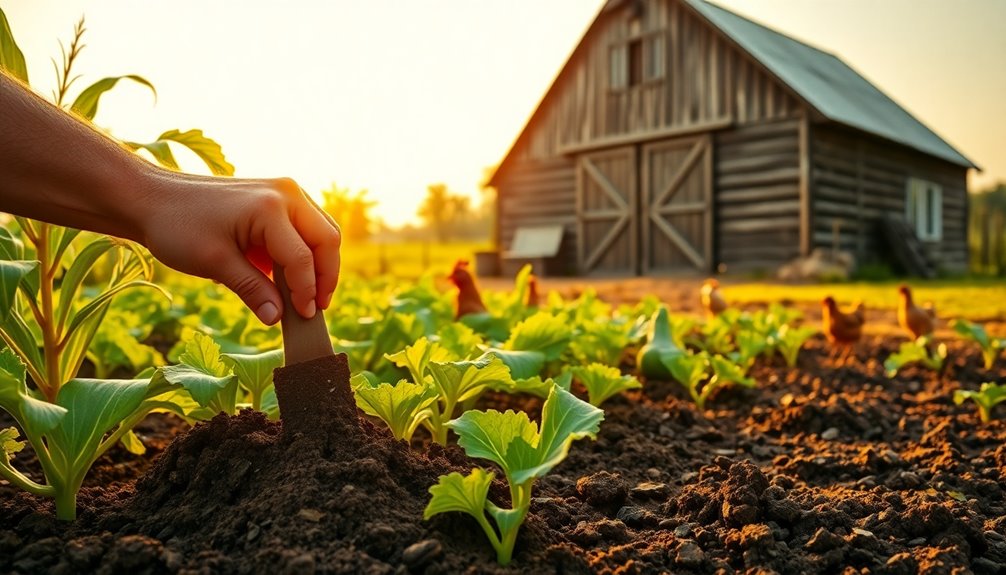
Subsistence farming focuses on producing just enough food to feed the farmer's family, leaving little or no surplus for sale or trade.
In this agricultural practice, you typically work small plots of land, often just a few acres, cultivating diverse crops tailored to meet your household's nutritional needs.
You rely mainly on family labor and employ traditional farming methods, which often lack modern technology and inputs.
This approach is essential for food security, especially in rural areas, as it minimizes your dependence on external markets and their price fluctuations.
Additionally, subsistence farming helps preserve local cultural traditions and practices while supporting biodiversity and environmental sustainability.
It's a fundamental way to guarantee your family's well-being and maintain your community's heritage.
Key Characteristics
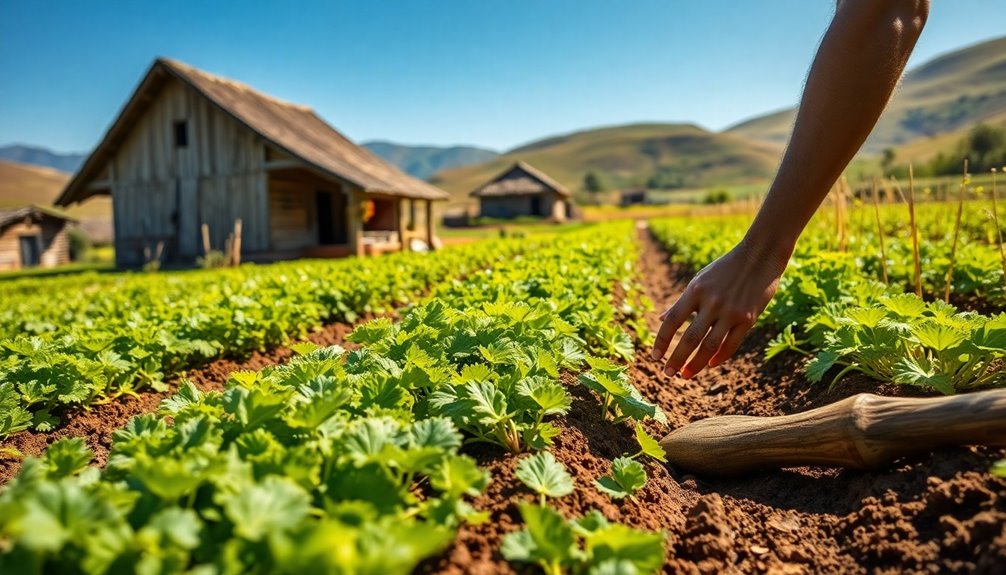
In the world of agriculture, key characteristics define subsistence farming and set it apart from other types of farming practices. Subsistence farmers typically work small parcels of land, often just a few acres, to grow enough food for their families without surplus for sale or trade.
They rely heavily on family labor and traditional methods, facing challenges like limited access to resources and low yields. To meet their nutritional needs, these farmers cultivate a variety of crops, reflecting local dietary requirements and agricultural practices.
However, environmental factors, including climate change, can threaten their food supply, making them vulnerable to adverse weather conditions. This unique farming style emphasizes self-sustainability while highlighting the challenges farmers face in their daily lives.
Importance of Subsistence Farming
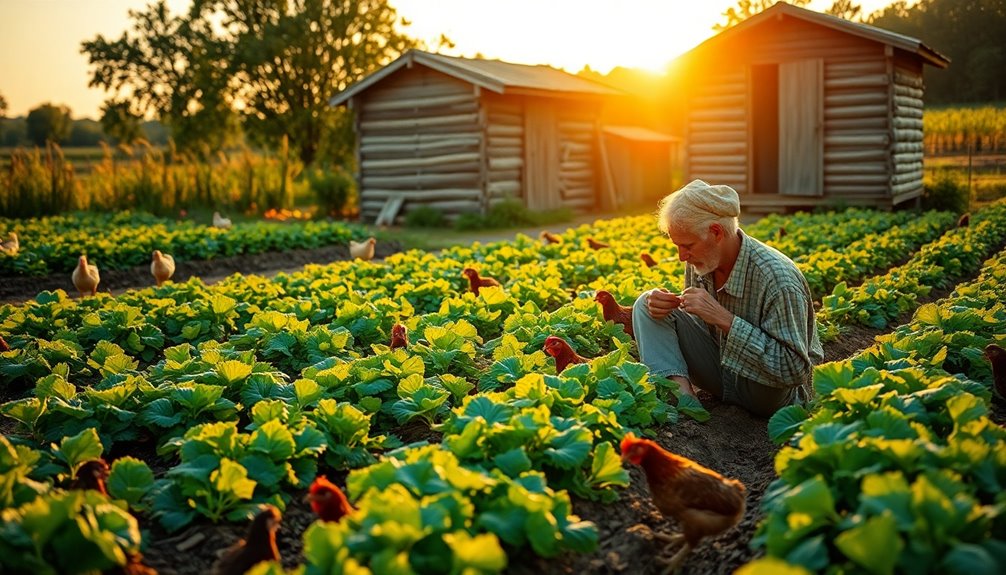
Subsistence farming plays an essential role in enhancing food security for families, especially in areas where markets are out of reach. By growing their own food, you not only guarantee your household's needs are met but also help preserve cultural heritage tied to traditional farming practices.
This method strengthens community bonds and supports sustainable living, making it critical in today's changing world.
Food Security Enhancement
A essential component of food security, subsistence farming directly provides families with the fundamental nutrition they need, reducing their dependence on external markets.
This practice enhances food security by ensuring a stable food supply, particularly in rural areas where commercial food systems may be limited. By cultivating a diverse range of crops, you can meet your nutritional needs while mitigating the risks of crop failure and food shortages.
Subsistence farming also promotes resilience against climate variability and economic downturns. Plus, it supports traditional agricultural knowledge, which is critical for sustainable land management and local biodiversity.
Ultimately, this approach not only secures food sources for your family but strengthens community food sovereignty, making it a powerful tool for food security enhancement.
Cultural Heritage Preservation
The importance of cultural heritage preservation in agriculture can't be overstated, especially when it comes to subsistence farming. By utilizing traditional farming practices, you not only sustain your family's livelihood but also keep your cultural identity alive.
Here's why it's significant:
- It maintains age-old techniques passed down through generations.
- It promotes biodiversity through a variety of locally preferred crops.
- It strengthens community ties by fostering family labor.
- It supports cultural rituals tied to planting and harvesting.
- It safeguards cultural autonomy against globalization.
In essence, by embracing subsistence farming, you're actively preserving cultural heritage, ensuring that the significance of subsistence continues to thrive in your community.
Challenges Faced by Farmers
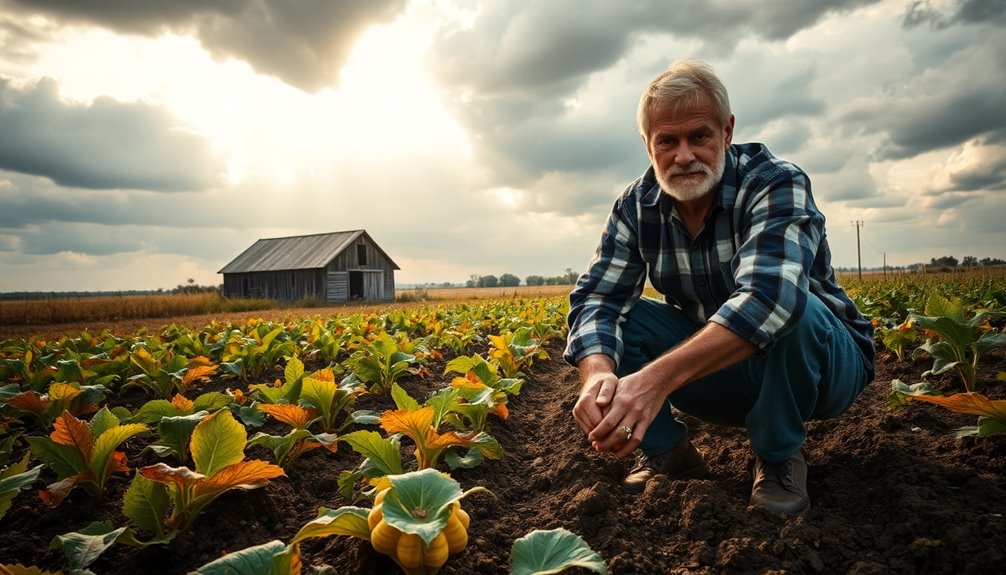
As a subsistence farmer, you know how unpredictable weather can threaten your crops and food security.
Limited access to essential resources, like improved seeds and tools, makes it even harder to maintain productivity.
These challenges not only impact your immediate yields but also your long-term sustainability.
Weather Vulnerability Issues
Facing the unpredictability of weather, subsistence farmers encounter significant challenges that threaten their livelihoods. Weather vulnerability issues create barriers in food production, making it tough for you to sustain your family. Traditional farming methods often leave you unprepared for extreme weather events like droughts and floods.
- Inconsistent harvests lead to food insecurity.
- Climate change intensifies extreme weather patterns.
- Limited use of modern agricultural technologies hinders adaptation.
- Seasonal fluctuations disrupt planting and harvesting schedules.
- Crop yields are directly affected by unpredictable weather.
These factors make it increasingly difficult to produce enough food year-round, risking your family's well-being.
Without the means to adapt, the struggle for survival becomes even more intimidating.
Limited Resource Accessibility
Limited resource accessibility poses significant challenges for subsistence farmers endeavoring to sustain their families.
You often grapple with limited access to modern agricultural inputs, like high-yield seeds and advanced tools, which can hinder productivity and worsen food insecurity. Relying on traditional farming techniques, you may find it increasingly difficult to adapt to changing climate conditions, heightening the risk of crop failures.
Economic constraints also prevent you from investing in improved practices or technologies, keeping you stuck in cycles of low yields. In addition, limited access to markets restricts your ability to sell any surplus, forcing you to depend on local barter systems instead of cash transactions.
Urbanization and industrial agriculture further complicate your efforts to maintain traditional practices and livelihoods.
Global Distribution Trends
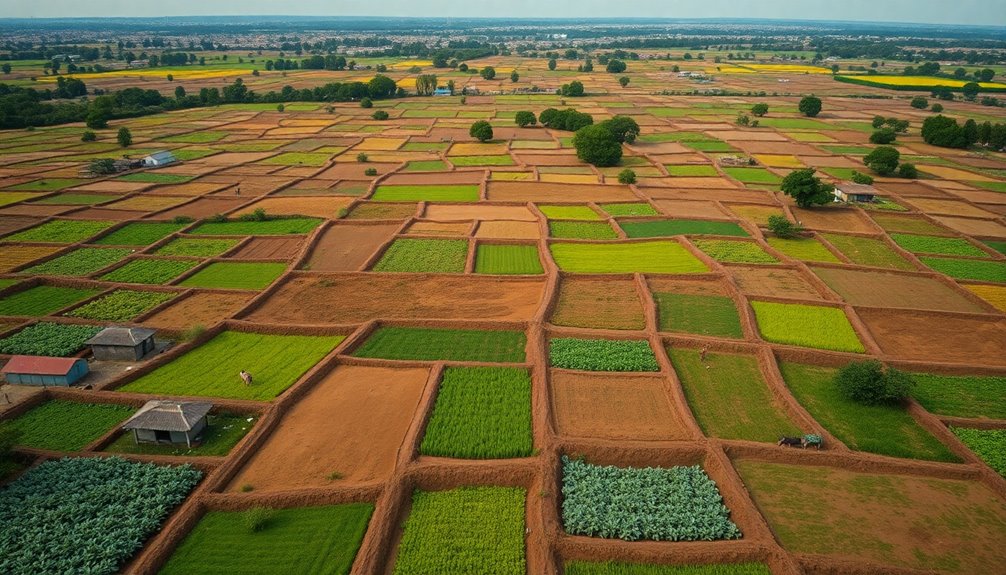
Understanding global distribution trends in subsistence farming reveals significant regional variations influenced by climate, culture, and resources.
Subsistence farms thrive mainly in sub-Saharan Africa, where around 70% of the rural population depends on them. In South Asia, smallholder farmers grow diverse crops to sustain their families. Latin America also showcases traditional farming practices in its rural areas.
These factors contribute to the unique characteristics of subsistence farming:
- Climate shapes crop selection and yields.
- Cultural traditions dictate farming practices.
- Resource availability influences farming methods.
- Many farmers operate in remote locations.
- Local markets often dictate production, limiting global integration.
Economic Impact of Subsistence Farming
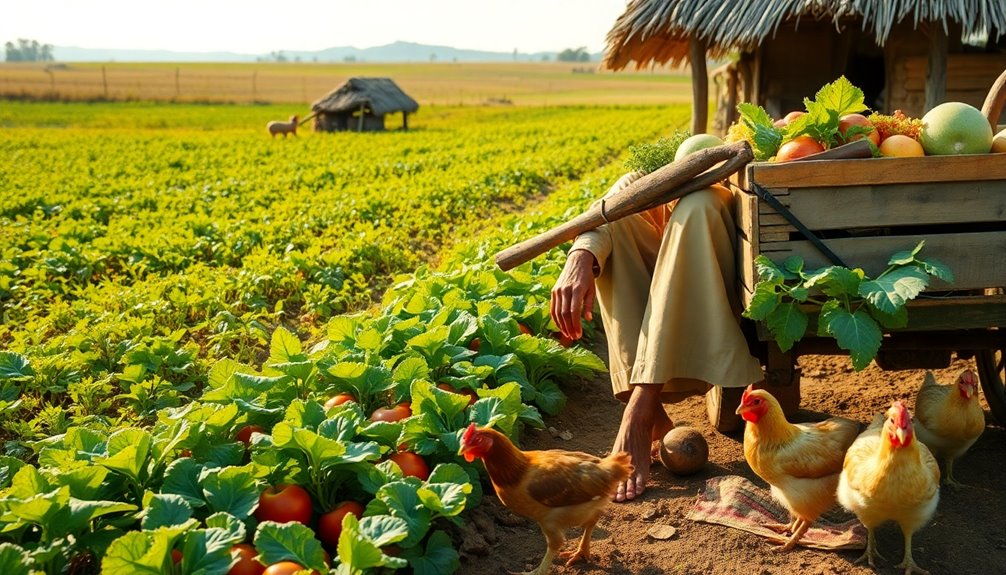
Subsistence farming has a profound economic impact on rural communities, primarily by providing food security for families. While this type of farming refers to growing crops for personal consumption, it generates minimal cash flow, often resulting in little to no surplus for sale.
Farmers typically rely on local resources and barter systems, limiting their engagement with broader markets and leaving them vulnerable to market fluctuations. Without access to modern agricultural technologies, productivity and economic growth in these communities are hindered.
Additionally, climate change threatens their economic stability, increasing the risk of crop failures. Despite these challenges, subsistence farming remains essential for sustaining rural livelihoods and preserving cultural traditions, ensuring that families can secure direct food sources amidst economic limitations.
Modern Relevance and Adaptation
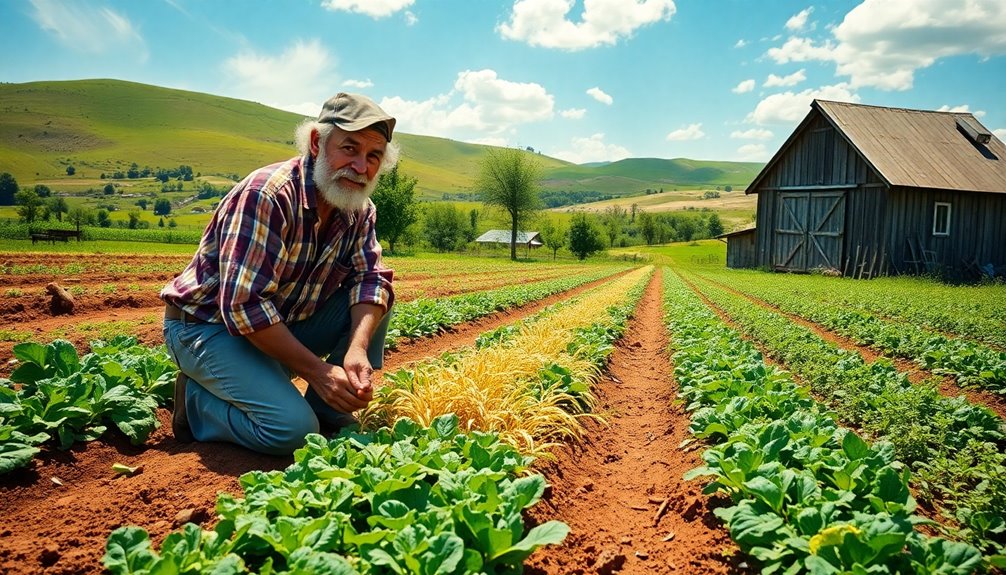
The modern relevance of subsistence farming is becoming increasingly clear, especially as it plays an essential role in enhancing food security and resilience in rural communities.
By integrating traditional methods with modern agricultural practices, subsistence farmers are adapting to environmental challenges while preserving their cultural heritage. This deeply rooted approach not only sustains local ecosystems but also guarantees access to nutritious food.
- Combines agroecology and permaculture for improved yields
- Strengthens community resilience against market volatility
- Preserves biodiversity amid increasing urbanization
- Utilizes traditional knowledge in contemporary practices
- Requires policy support for resource access and training
These adaptations highlight how subsistence farming remains fundamental in today's world, proving it can coexist with modern agricultural advancements.
Future Outlook and Sustainability
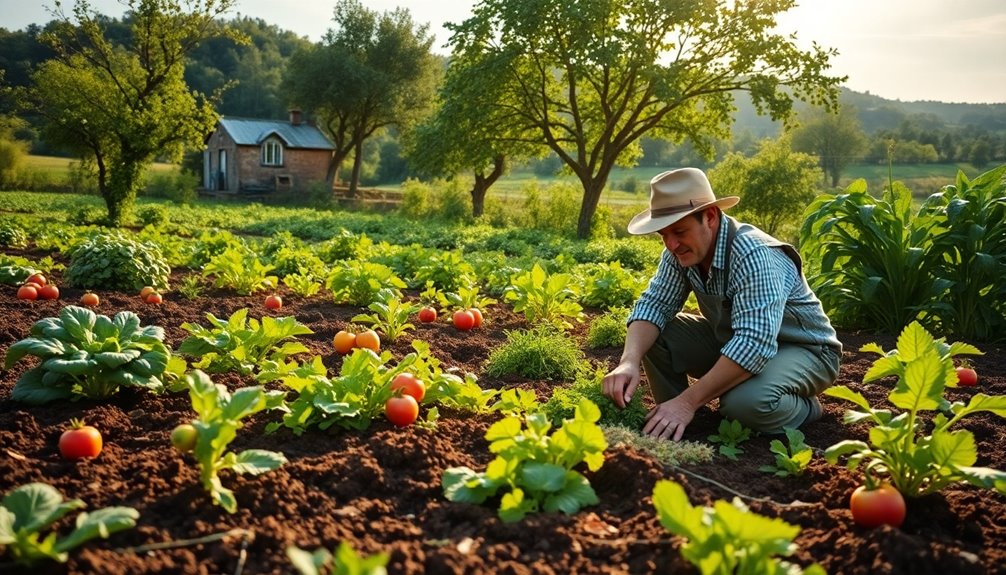
As we look ahead, the future of subsistence farming relies heavily on sustainable practices that enhance resilience against climate change and environmental degradation.
By integrating innovations in agroecology and regenerative farming techniques, you can boost yields while preserving biodiversity and soil health.
Policy support plays an essential role, helping you improve productivity and access modern agricultural resources to adapt to shifting market conditions.
Collaborating with local communities and organizations will facilitate knowledge sharing, ultimately strengthening food security and livelihoods.
Additionally, it's imperative to preserve traditional farming practices, as they maintain cultural heritage and ecological balance within subsistence systems.
Together, these strategies guarantee that subsistence farming remains viable and sustainable for generations to come.
Frequently Asked Questions
What Is Subsistence Farming?
Subsistence farming is when you grow food mainly to feed your family, with little left over to sell or trade.
You often work on small plots of land, relying on family labor and traditional methods.
This approach focuses on producing a variety of crops to guarantee your family's nutritional needs are met, prioritizing food security over profit.
While it faces challenges, it remains essential for local food systems and cultural traditions.
Is Subsistence Farming Sustainable?
You might find that subsistence farming has its ups and downs when it comes to sustainability. While it can provide immediate food security, challenges like low yields and climate change can threaten its long-term viability.
What Is Self Subsistence Farming?
When you think of self-subsistence farming, imagine a family's hands deep in the soil, nurturing crops and livestock to feed themselves. This practice focuses on growing food for personal consumption rather than for sale.
You'll find a mix of plants that adapt to your local climate and soil, ensuring a healthy diet. Although it enhances food security, you'll face challenges like climate change and urbanization that threaten these traditional methods.
What Is the Definition of Subsistence Farming in AP Human Geography?
In AP Human Geography, subsistence farming is defined as an agricultural practice where you grow food primarily for your family's consumption rather than for sale.
This means you focus on small-scale farming, often using traditional methods and family labor. You typically cultivate diverse crops to meet your nutritional needs, which helps guarantee food security.
This approach is especially common in regions with limited access to markets and resources, shaping local agricultural practices.
Conclusion
In a world racing toward industrialization, you might find solace in the age-old practice of subsistence farming. Like the humble roots of a tree, it grounds communities in self-sustainability, nurturing both body and spirit. By embracing this ancient wisdom, you can cultivate resilience against modern challenges. So, as you wander through the fields of possibility, remember that the seeds of tomorrow's sustainability are sown today, echoing the rhythms of nature's timeless dance.

